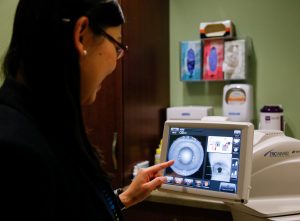The American Telehealth Assocation (ATA), the premier organization working to accelerate the adoption of telehealth, published the 3rd Edition of its practice guidelines for ocular telehealth-diabetic retinopathy in Telemedicine and eHealth Journal (Vol. 26, No. 4, April 2020). The ATA guidelines detail best practices for the clinical implementation of telemedicine for diabetic retinopathy, and rely on established and accepted protocols for the diagnosis, treatment and care of diabetic retinopathy. These recommendations we developed by consensus of academic, clinical, and industry experts, ATA special interest workgroups and other stakeholders.
This 3rd Edition reflects new data, emerging technologies and the expanded scope of ocular telehealth, and highlights current clinical, technical and administrative issues in evaluating diabetic retinopathy (DR) with telehealth services and technologies. The ATA guidelines also recognize the growing evidence for telemedicine applications in other ophthalmic areas — such as glaucoma, age related macular degeneration, retinopathy of prematurity and telemedicine based artificial intelligence — providing diagnostic evaluation of pathologic eye conditions.
“Diabetic retinopathy is the most common cause of vision loss among working-age U.S. adults, largely due to low screening rates and delayed detection. Early detection and timely treatment can prevent 95% of severe vision loss from diabetes. Telemedicine programs improve access to high-quality, cost- effective screening to prevent avoidable blindness from diabetes,” said Yao Liu, MD, MS, assistant professor and chair of the ATA Ocular Telehealth Special Interest Group (SIG). “With the continuing increase in diabetes prevalence, there has never been a greater need for the widespread use of evidence-based telemedicine in our communities to preserve vision.”

Telehealth programs for diabetic retinopathy have been shown to be an efficacious, cost-effective and scalable means to prevent diabetes-related vision loss. The ATA believes that these guidelines will help to increase access to high-quality, efficient and cost-effective remote evaluation of DR, and facilitate integration of diabetes eye care between primary care and eye care specialists.
“We sought public comment in the development of these guidelines, and included feedback from the American Academy of Ophthalmology and American Optometric Association,” added April Maa, MD, Associate Professor, Department of Ophthalmology, Emory University School of Medicine, and Vice Chair of the ATA Ocular Telehealth SIG. “The third edition also recognizes the growing evidence for telemedicine applications in other ophthalmic areas, and the ATA intends to further develop ocular telehealth guidelines for these additional conditions.”
About Diabetic Retinopathy
According to the National Eye Institute, vision lost to diabetic retinopathy can be irreversible. However, early detection and treatment can reduce the risk of blindness by 95%. Because diabetic retinopathy often lacks early symptoms, people with diabetes should have eye screening at least once a year or as recommended by their eye care provider.
About the ATA
As the only organization completely focused on advancing telehealth, the ATA is committed to ensuring that everyone has access to safe, affordable and appropriate care when and where they need it, enabling the system to do more good for more people. The ATA represents a broad and inclusive member network of technology solution providers and payers, as well as partner organizations and alliances, working to advance industry adoption of telehealth, promote responsible policy, advocate for government and market normalization, and provide education and resources to help integrate virtual care into emerging value-based delivery models.
Source: American Telehealth Association press release, April 1, 2020